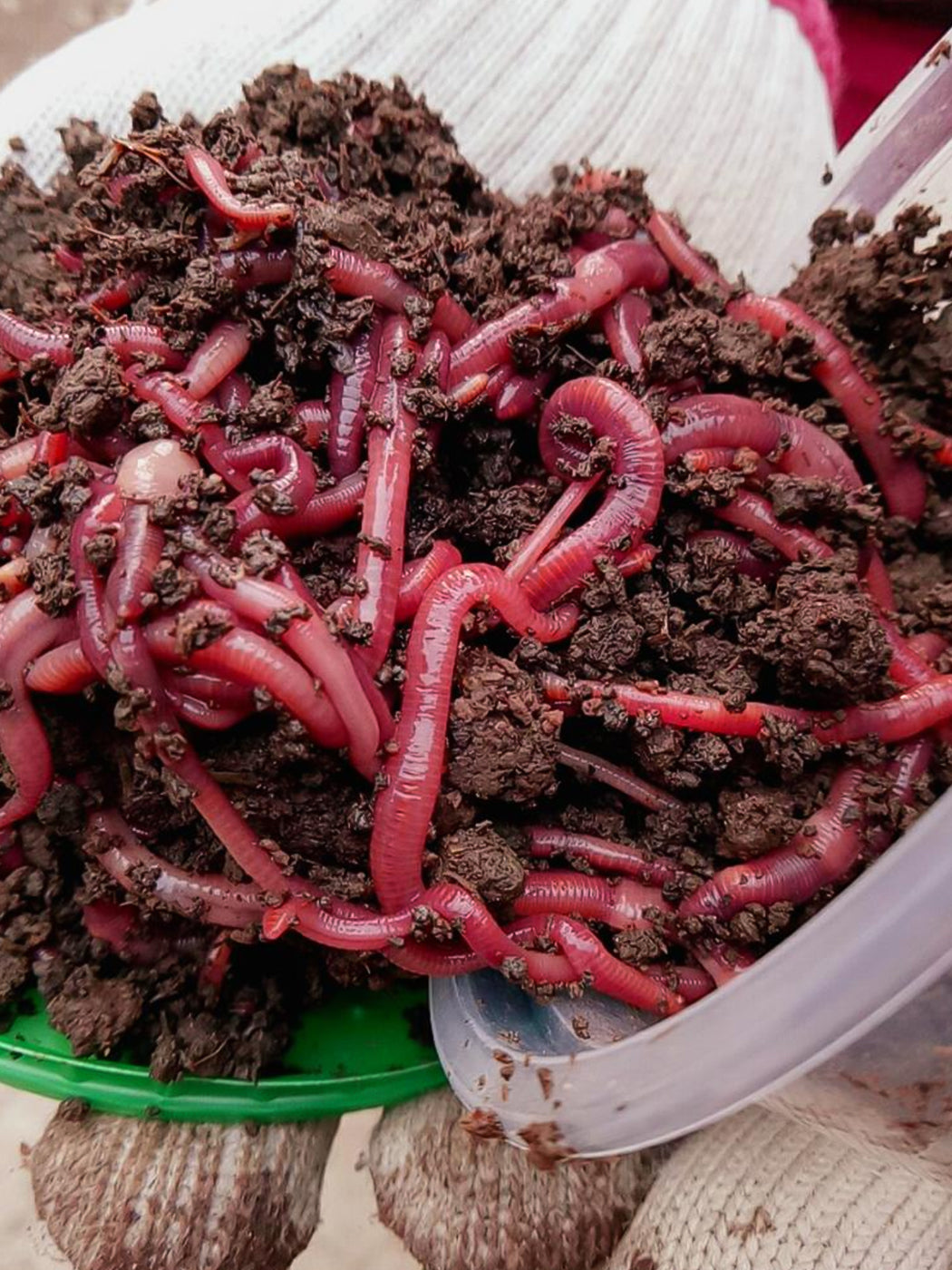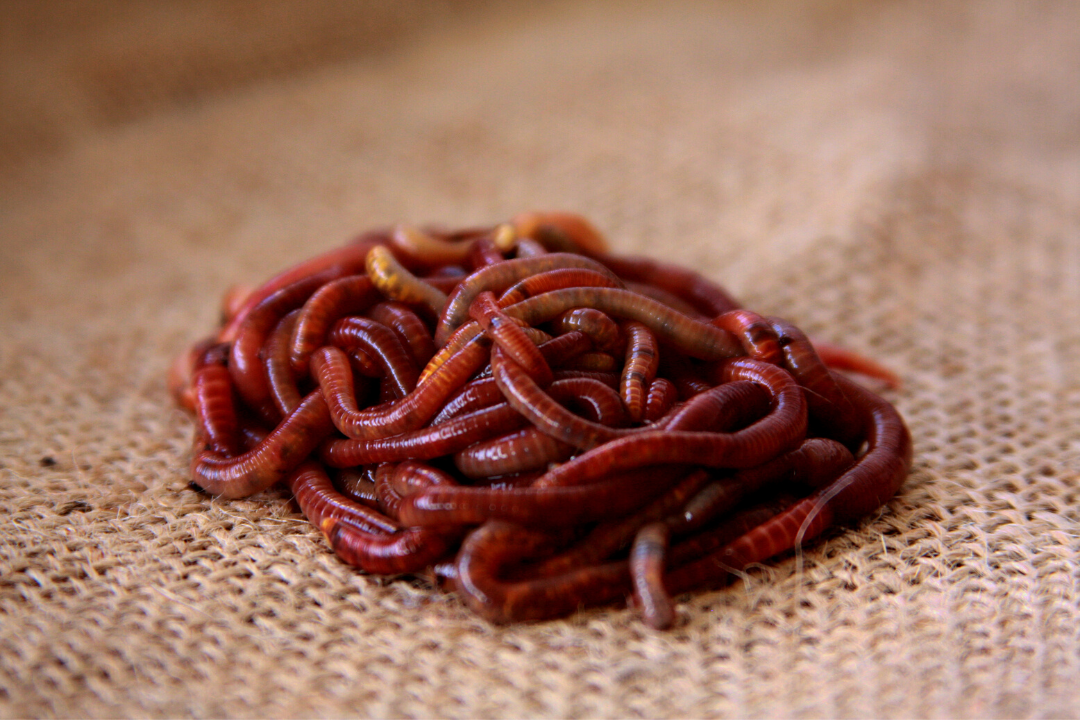Experience the Advantages of Using Red Wiggler Express for Effective Lawn Care
Experience the Advantages of Using Red Wiggler Express for Effective Lawn Care
Blog Article
Unlock the Tricks of Red Wigglers: Your Guide to Composting Success
The combination of red wigglers into composting practices presents a significant opportunity for enhancing dirt wellness and promoting sustainability. These organisms are not merely efficient recyclers of natural waste; they supply a myriad of advantages that can change garden management. Understanding their needs and actions is crucial for maximizing their possibility, from establishing up a proper worm bin to feeding them the right products. As we discover the necessary elements of successful vermicomposting, one could ask yourself exactly how these small animals can cause a much more dynamic and productive yard community.

What Are Red Wigglers?
(Lake Hickory Bait)Red wigglers, scientifically recognized as Eisenia fetida, are a types of earthworm primarily used in composting due to their impressive ability to decay raw material efficiently. These worms are identified by their reddish-brown coloration and a fractional body, usually measuring between 3 to 4 inches in size. Unlike other earthworm types, red wigglers thrive in rich, natural environments, making them suitable for vermicomposting systems.
Belonging To The United States And copyright, they are often discovered in decomposing leaves and compost heaps, where they play an important duty in nutrient recycling. Their adaptation to residing in a wet, aerobic atmosphere allows them to eat large quantities of organic waste, simplifying right into nutrient-rich castings that improve dirt wellness.
Red wigglers duplicate quickly, with a single worm capable of producing a number of cocoons each week, each having several hatchlings. Understanding the biology and behavior of red wigglers is crucial for optimizing their capacity in composting applications.
Benefits of Utilizing Red Wigglers
Harnessing the power of red wigglers in composting offers numerous advantages that improve soil health and wellness and promote sustainable waste monitoring. These amazing microorganisms effectively damage down natural matter, changing cooking area scraps and yard waste right into nutrient-rich vermicompost. This completed product is incredibly helpful for plant development, as it enhances dirt framework, raises dampness retention, and improves vitamins and mineral accessibility.

(Lake Rhodhiss Bait)In addition, the presence of red wigglers in your composting system can accelerate the composting process, creating premium garden compost in a fraction of the moment contrasted to typical approaches. The castings generated by these worms are likewise brimming with valuable microorganisms that additionally enhance the dirt ecological community.
Establishing Your Worm Container
Creating a reliable worm bin is a simple procedure that can dramatically boost your composting initiatives. The primary step is choosing an ideal container. Worm bins can be made from plastic storage space containers, wooden boxes, or commercially offered worm containers. Ensure the bin has ample drain and ventilation openings to maintain optimum wetness degrees and airflow.
Next, prepare the bed linens product, which works as the worms' habitat. A mix of shredded paper, cardboard, and coconut coir functions well, giving a comfortable setting for the worms. Go for a bedding depth of regarding 4-6 inches. Dampen the bedding gently, ensuring it resembles a damp sponge without excess water merging at the base.

Feeding Your Red Wigglers
To guarantee the health and efficiency of your red wigglers, it is important to supply them with a balanced diet plan that satisfies their nutritional demands. Red wigglers grow on a diverse selection of natural products, which not just provide needed nutrients however also promote reliable composting.
Begin by integrating kitchen scraps such as veggie peels, fruit cores, and coffee grounds. Stay clear of citrus fruits, onions, and garlic, as these can be detrimental to worm wellness. Furthermore, introduce shredded paper, cardboard, and completely dry fallen leaves to produce a well-aerated setting.
Feeding frequency should be checked; typically, worms can take in half their body weight in food weekly. It is critical to stay clear of overfeeding, as excess food can bring about undesirable odors and draw in parasites. A great method is to include food in little quantities, allowing worms to refine it before introducing a lot more.
Keeping dampness degrees is likewise crucial; the bed linen must be moist yet not soggy. Be sure to regularly inspect the temperature level and pH levels of the bin to make sure an optimum atmosphere for your red wigglers, eventually boosting their composting effectiveness.
Harvesting and Utilizing Garden Compost
An effective composting process with red wigglers culminates in the rich, dark garden compost called vermicompost, which can substantially boost dirt health and wellness and plant growth. Collecting this nutrient-dense material commonly discover here happens every three to 6 months, depending upon the size of your system and the quantity of organic matter being processed.
To gather, delicately separate the compost from the worms and any undecomposed materials. One efficient approach includes moving the materials of the container to one side and adding fresh bed linens and food to the void, encouraging the worms to move. After a few days, the garden compost can be gathered from the contrary side.
It is vital to utilize vermicompost correctly to optimize its benefits. By incorporating vermicompost right into your gardening routine, you not only reuse organic waste yet additionally produce a thriving ecological community that supports sustainable horticulture techniques.
Conclusion
In recap, red wigglers serve as remarkable allies in composting initiatives, transforming natural waste into nutrient-rich vermicompost. By recognizing the ideal problems for their environment, feeding needs, and compost harvesting methods, garden enthusiasts can improve soil wellness and promote plant vitality.
Report this page